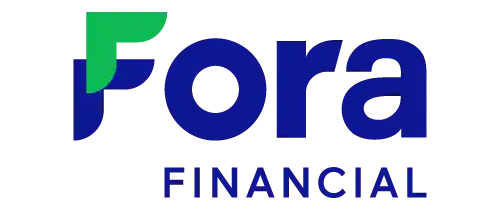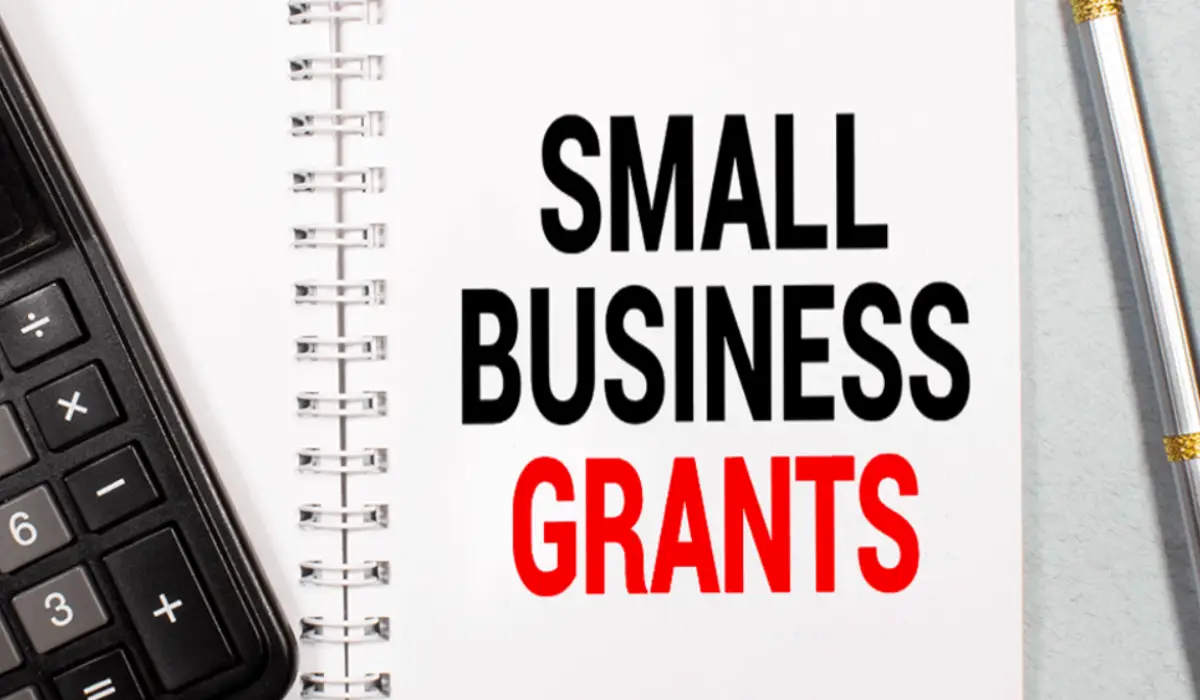Small businesses are the backbone of our economy, but when disasters like the pandemic hit, many find themselves on shaky ground. That’s where the small business stabilization grant comes—a grant to help businesses in tough times. Whether it’s rent, utilities, or other expenses, the esGrantis grant can help stabilize small businesses and keep them afloat.
If you’re a business owner or know someone who runs a small business, this article will walk you through everything you need to know about the small business stabilization grant. We’ll cover eligibility, how to apply, and what expenses the grant can cover. So, let’s get started and see if Grantis grant could be a lifesaver for your business.
Related: Business Loan Partnership: 5 Best Financing Solutions for Your Business

What is the Small Business Stabilization Grant?
The Small Business Stabilization Grant is a financial assistance program to help small businesses through tough economic times. It’s targeted at businesses with fewer employees and those that are the backbone of their communities. Funding eligible expense grants help to stabilize operations and keep businesses open.
These grants are part of larger programs like the Community Development Block Grant or other local government or federal programs like the American Rescue Plan.
Who can apply for a grant?
Not all businesses are eligible for the small business stabilization grant. Eligible businesses must meet certain criteria, including showing that they’ve been impacted by a crisis or economic downturn and providing required documentation to prove eligibility.
Common eligibility requirements include:
- Business existed before the crisis (e.g., the pandemic).
- Business is registered in a specific city or county.
- Only companies with a certain number of employees (usually small businesses with fewer employees).
Nonprofits and property owners may also qualify but eligibility rules vary by grant program.

- Amount = $5,000 to $500,000
- Loan Term = 4 to 24 months
- Interest Rate = 1.11%
4.8
editorial team. We score based on factors
that are helpful for consumers, such as
how it affects credit scores, the rates and
fees charged, the customer experience,
and responsible lending practices.
- Min. Amount = $10,000
- Max Amount = $500,000
- APR = Factor rate starting at 1.11%
4.8
editorial team. We score based on factors
that are helpful for consumers, such as
how it affects credit scores, the rates and
fees charged, the customer experience,
and responsible lending practices.
Best for large business loans

- Loan Amount = $25,000 - $3,000,000
- $10,000 in Monthly Rev
- No minimum credit score requirement
4.9
editorial team. We score based on factors
that are helpful for consumers, such as
how it affects credit scores, the rates and
fees charged, the customer experience,
and responsible lending practices.
Best for large business loans

- Min Amount = $5,000 - 1,500,000
- APR range Not disclosed
- Minimum Credit Score 570
4.7
editorial team. We score based on factors
that are helpful for consumers, such as
how it affects credit scores, the rates and
fees charged, the customer experience,
and responsible lending practices.
Best for Small business loans

- Min Credit Score = 620
- Loan Amount = $10K-$5M
- Term = 6 months - 10 years
- APR = Variable
4.8
editorial team. We score based on factors
that are helpful for consumers, such as
how it affects credit scores, the rates and
fees charged, the customer experience,
and responsible lending practices.

- Check Your Eligibility
- Get $10K to $2M
- 24/7 Support
4.8
editorial team. We score based on factors
that are helpful for consumers, such as
how it affects credit scores, the rates and
fees charged, the customer experience,
and responsible lending practices.

- Amount = $10,000 to $1,000,000
- Factor Rate = Starting at 1.24
- Term = 2 to 12 months
4.7
editorial team. We score based on factors
that are helpful for consumers, such as
how it affects credit scores, the rates and
fees charged, the customer experience,
and responsible lending practices.
What expenses does the grant cover?
The small business stabilization grant covers a lot of eligible expenses. Here are some of the common expenses business owners can use the funds for:
- Paying rent is one of the most common uses of these grants. For many businesses, rent is a fixed cost, and grants can help avoid eviction or falling behind on payments.
- Essential services like electricity, water,, and internet can also be covered.
- Some grant programs allow businesses to use the funds to pay their employees to keep their workforce intact.
- Any other ongoing expenses that keep the business running, such as supplies, equipment, or services, may be eligible.
Check with the grant program to see what’s covered and determine if your expenses fit into the eligible categories.

How does the application process work?
Applying for a small business stabilization grant varies by organization, but the process is similar. Here’s a step-by-step breakdown:
- Before applying,,, ensure your business meets all the eligibility criteria the grant provider sets.
- This includes financial statements, proof of registration, and other forms showing that your business has been impacted by a crisis.
- Most grants require an online application through the provider’s website. Make sure all forms are completed correctly and fully.
- Once submitted, the application will be reviewed. Approval times vary, but most programs are first come, first served, so apply as soon as possible.
- After approval, the grant award will be sent to the business, and you can use the funds to cover eligible expenses.
How much funding can you get?
The amount of funding a business can receive from a small business stabilization grant varies by program. Some grants are capped at a certain amount, while others are more flexible based on the business’s needs.
For example, local grants may provide $5,000 to $25,000 in assistance, while federal programs like the American Rescue Plan may offer more. Read the grant program guidelines to learn what to expect.
What is Prosper Portland?
One organization that has helped businesses is Prosper Portland. This economic development agency is dedicated to supporting small businesses in Portland, Oregon. Their small business stabilization grants have helped many local businesses weather the storm, and they continue to support small businesses looking for help.

What if your application is rejected?
Rejection doesn’t mean it’s the end. Many grant programs have multiple funding rounds, so you can reapply when new funds become available. If your application is rejected, review the feedback (if any) and address any missing or incomplete information. You can also consult local business development organizations to improve your applicant’s chances in the next round.
Why are small business stabilization grants important?
Small businesses operate on thin profit margins, and any economic disruption can be catastrophic. Grants like the small business stabilization grant are a lifeline. These grants help businesses stay open, retain employees, and contribute to the local economy by covering essential expenses.
Plus, grants give business owners peace of mind, knowing they have established a financial safety net to fall back on during uncertain times. In some cases, grants can provide enough stability for a business to thrive long-term and turn a crisis into an opportunity for growth.
Grant Recipients
Many businesses have received small stabilization grants and used the funds to overcome tough times. For example, a restaurant company in Seattle used a grant to pay its employees during the early months of the pandemic, and a clothing store in Chicago used a grant grant to pay rent and utilities.
These stories show that small businesses can overcome anything with the right support with the right support and continue to serve their community.
Application Process: A Step-by-Step Guide
The application process is one of the biggest challenges for small businesses seeking a stabilization grant. Most grant programs for small businesses have streamlined processes to encourage participation. Here’s a step-by-step guide to help small owners apply for a stabilization grant.
Check Eligibility: Make sure your business meets the eligibility criteria before applying. This usually includes things like the the number of em loyees, revenue limits,, and whether the business was affected by external cri Here’se a pandemic. Each program has its own criteria, so be sure to review them carefully. Businesses must also have been in operation before a certain date, often tied to the crisis event,, like March 2020, for pandemic-related, for pandemic-related assistance.
Gather Required Documents: Most grant programs require proof of eligibility. This could be tax documents, proof of operating costs, payroll records, or financial statements. He will also need to submit identification details like business registration certificates and proof of business you’re. Applications are often rejected without these documents, so gather all necessary papers before submitting.
Fill Out the Application: Most grants have an online application portal where you can fill out and submit your application. The form will ask for basic information about your business, the impact on your revenue, and how you will use the funds if awarded. Be thorough and precise when filling out the application to avoid delays.
Submit and Wait: After applying, the waiting game applicants should keep track of the deadlines and any additional information requests from the grant provider. Be sure tprogram’sprogram’sup if necessary to ensure your application isn’t lost in the shuffle.
Receive and Use the Funds: Once the grant is awarded, the funds can be used according to the guidelines. Make sure you understand the restrictions and proper uses of the grant money to avoid penalties or having to return it. The funds should often be used for critical business needs like payroll, rent, and operational costs.
Funding Limits: How Much Can You Get?
Small business stabilization grants range in amount. Some programs will give you a few thousand dollars, while others will provide you with much more. Grants are designed to cover specific expenses like rent, utilities, payroll, or marketing costs. Note that grants are often capped, meaning you can’t ask for more than the maximum amount allowed by the grant program.
For example, some grants tied to local governments will give up to $10,000 to stabilize small businesses during an economic downturn. Others,, like the American Rescue Plan,, will give much more.
Eligible Expenses for Stabilization Grants
Ensure you use the grant money wisely by understanding what qualifies as eligible expenses. Each grant program has its own rules and regulations, but here are some common eligible expenses for small business stabilization grants:
- Payroll: Keeping employees on the payroll is often a top priority for grant programs.
- Rent or Mortgage: Many grants help small businesses keep their operating locations by covering rent or mortgage payments.
- Utilities: The cost of essential services like water, electricity, and internet are often covered.
- Operational Costs: Expenses related to daily business operations can also be covered dependingGranthe grant.
Review what expenses and insurance are covered to avoid using the money improperly.
Challenges Small Businesses Face in Getting Grants
While small business stabilization grants are great, getting one is challenging. Here are some of the hurdles small businesses may face:
- Limited Availability: Many stabilization grants are first come, first served. Once the funds are depleted,, no more grants are distributed,, and some eligible companies are left out.
- Complex Application Process: While some grants have simplified the process, others can be more complicated and time-consuming. Applicants must follow instructions carefully and ensure all required documents are submitted to avoid disqualification.
- High Competition: Many small businesses apply for limited funds, making competition tough. Even eligible companies may miss out due to high demand.
- Timely Use of Funds: Once awarded, businesses must use the funds within the timeline specified by the grant program. If not used within that timeframe, businesses may be required to return the unused portion of the grant.
Local Governments Involved in Grant Distribution
Local governments distribute small business stabilization grants. Many cities partner with organizations like the Community Development Block Grant (CDBG) program, which allocates federal funds to benefit the local community. City governments distribute these grants to stabilize small businesses and keep them open during tough times.
For example, cities like Prosper Portland have launched programs to support local small businesses by offering stabilization funds and technical assistance. These programs ensure small business owners have the resources to keep operating and retain employees.
Long-Term Benefits of Small Business Stabilization Grants
Getting a small business stabilization grant is more than just short-term financial help; it also has long-term benefits. Here are some of the long-term benefits:
- Increased Resilience: Businesses that get stabilization grants can better withstand financial shocks and become more resilient to future challenges.
- Job Retention: These grants ensure employees can keep their jobs by covering payroll costs, which means greater economic stability in the community.
- Community Impact: When small businesses thrive, so do the communities around them. These grants keep the fabric of local economies intact so companies can continue contributing to the local culture and economy.
Small Business Stabilization Grant Success Stories
Across the U.S., many small businesses have received small business stabilization grants. Here are a few examples:
- A bakery in Chicago: The bakery was closing during the pandemic, so it applied for a stabilization grant from the city’s CDBG program. With the grant, it was able to pay rent and retain its employees. Today, the bakery is thriving thanks to that help.
Community
Grants are important, but community support is just as important for small businesses. Local consumers can help small businesses recover by shopping locally and telling their friends about their favorite companies. After all, small businesses are more than just places to buy stuff. They’re part of the community.

- Amount = $5,000 to $500,000
- Loan Term = 4 to 24 months
- Interest Rate = 1.11%
4.8
editorial team. We score based on factors
that are helpful for consumers, such as
how it affects credit scores, the rates and
fees charged, the customer experience,
and responsible lending practices.
- Min. Amount = $10,000
- Max Amount = $500,000
- APR = Factor rate starting at 1.11%
4.8
editorial team. We score based on factors
that are helpful for consumers, such as
how it affects credit scores, the rates and
fees charged, the customer experience,
and responsible lending practices.
Best for large business loans

- Loan Amount = $25,000 - $3,000,000
- $10,000 in Monthly Rev
- No minimum credit score requirement
4.9
editorial team. We score based on factors
that are helpful for consumers, such as
how it affects credit scores, the rates and
fees charged, the customer experience,
and responsible lending practices.
Best for large business loans

- Min Amount = $5,000 - 1,500,000
- APR range Not disclosed
- Minimum Credit Score 570
4.7
editorial team. We score based on factors
that are helpful for consumers, such as
how it affects credit scores, the rates and
fees charged, the customer experience,
and responsible lending practices.
Best for Small business loans

- Min Credit Score = 620
- Loan Amount = $10K-$5M
- Term = 6 months - 10 years
- APR = Variable
4.8
editorial team. We score based on factors
that are helpful for consumers, such as
how it affects credit scores, the rates and
fees charged, the customer experience,
and responsible lending practices.

- Check Your Eligibility
- Get $10K to $2M
- 24/7 Support
4.8
editorial team. We score based on factors
that are helpful for consumers, such as
how it affects credit scores, the rates and
fees charged, the customer experience,
and responsible lending practices.

- Amount = $10,000 to $1,000,000
- Factor Rate = Starting at 1.24
- Term = 2 to 12 months
4.7
editorial team. We score based on factors
that are helpful for consumers, such as
how it affects credit scores, the rates and
fees charged, the customer experience,
and responsible lending practices.
Frequently Asked Questions
What is the small business stabilization grant? The grant provides financial support to small businesses in economic distress, covering essential expenses like rent, utilities, and payroll.
Who is eligible?
Eligible businesses are defined as small businesses with a certain number of employees, those impacted by a crisis, and those that meet the grant provider’s requirements.
Can nonprofits apply for the small business stabilization grant?
Yes, in some cases, depending on the grant program’s eligibility criteria, nonprofits can apply.
What can the grant funds be used for?
The funds can be used for eligible expenses like rent, utilities, payroll and other operating costs to keep the property owner or business open.
How do I apply?
Applications are usually only accepted if submitted online through the grant provider’s website. Before you apply, make sure to have all your documentation ready.


 Read More
Read More 





2 Responses